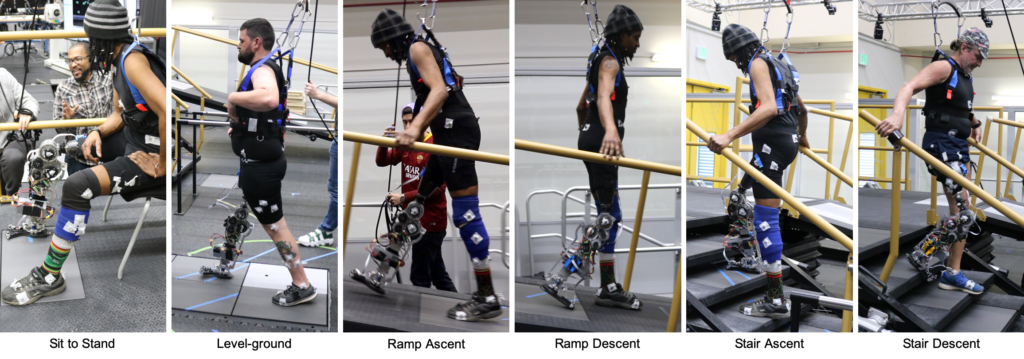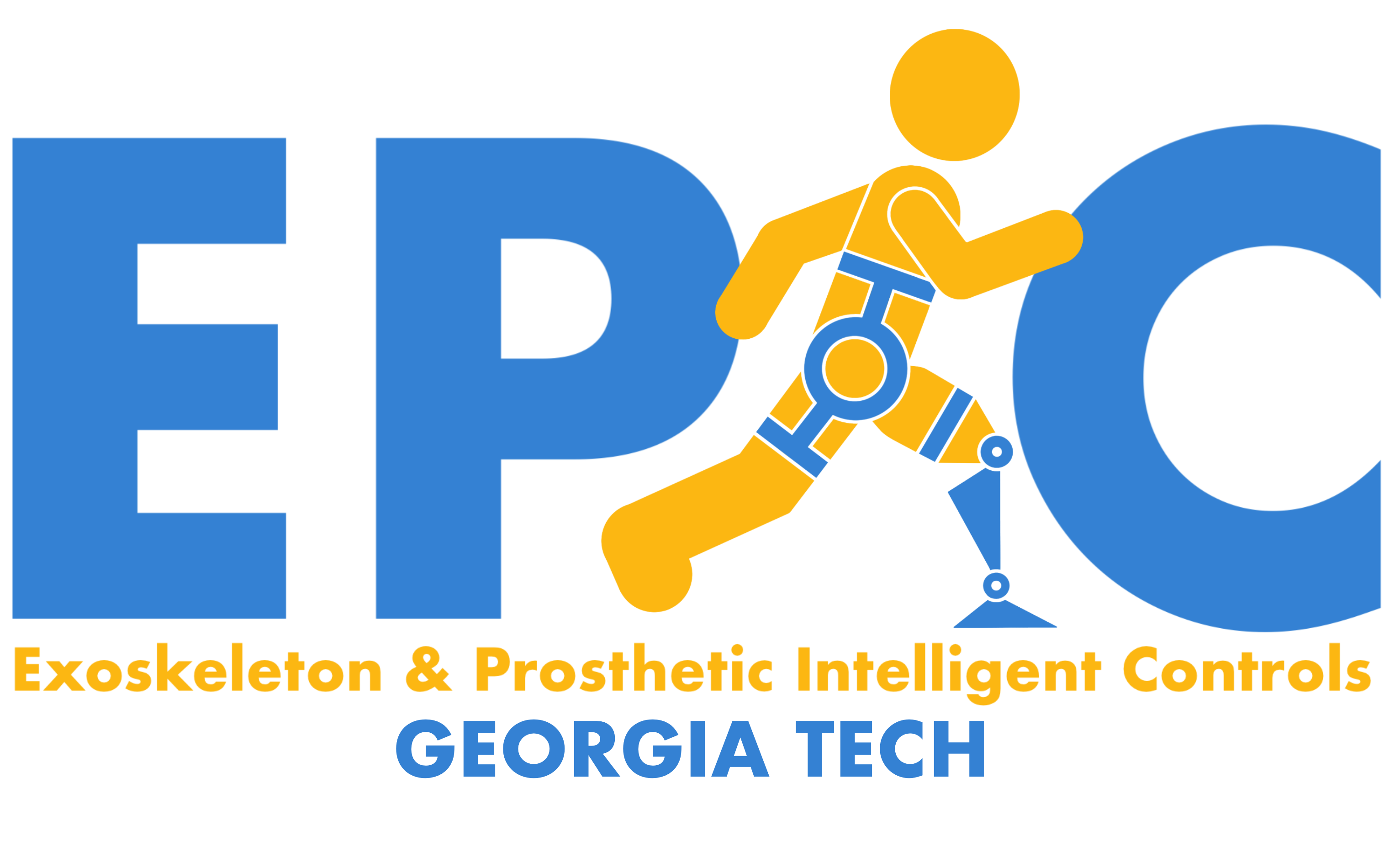Powered Knee & Ankle Prosthesis
Individuals with transfemoral amputation are subject to higher levels of exertion when using energetically passive prostheses. Powered prostheses have been proven to reduce this increased metabolic expenditure as well as provide additional benefits of reducing increased loading seen on the intact limb post-amputation. The EPIC lab has developed a powered prosthesis that utilizes two motors to provide assistance independently at both the knee and ankle joints. There a variety of embedded sensors such as encoders, inertial measurement units (IMUs), and a 6-DOF loadcell to help extract user information as one ambulates across a variety of walking modes (i.e. overground, ramps, and stairs). We are interested in developing intelligent intent recognition systems using machine learning and sensor fusion techniques that restores and improves overall independence and mobility.
Lab members:
Jason Zhou
Hanjun Kim
John Shim
Collaborators:
Dr. Aaron Ames
Dr. Lee Childers
Dr. Nick Fey
Robert Kistenberg
Eric Ambrose
Rachel Gehlhar
Related work:
Krishan Bhakta, Jairo Maldonado-Contreras, Jonathan Camargo, Sixu Zhou, William Compton, Kinsey R. Herrin, Aaron J. Young, “Continuous-Context, User-Independent, Real-Time Intent Recognition for Powered Lower-Limb Prostheses,” ASME Journal of Biomechanical Engineering, Volume 147, Issue 2 (2025) pp. 021009. (DOI)
Hanjun Kim, Dawit Lee, Jairo Y Maldonado-Contreras, Sixu Zhou, Kinsey R. Herrin, Aaron J. Young, “Mode-Unified Intent Estimation of a Robotic Prosthesis Using Deep-Learning,” IEEE Robotics and Automation Letters, vol. 10, no. 4, pp. 3206-3213, April 2025, (DOI)
Jairo Maldonado-Contreras, Cole Johnson, Sixu Zhou, Hanjun Kim, Ian Knight, Kinsey Herrin, Aaron Young, “Real-time Adaptation of Deep Learning Walking Speed Estimators Enables Biomimetic Assistance Modulation in an Open-Source Bionic Leg,” IEEE Transactions on Medical Robotics and Bionics, accepted, Jan 2025
Sujay Kestur, Jason Zhou, Gwyn O’Sullivan, Aaron Young, Kinsey Herrin, “Comparing the Lower Limb Joint Kinematics, Kinetics and Mechanical Work of the Power Knee, C-Leg and Rheo Knee during Ramp and Stair Ambulation,” Journal of Biomechanics, Volume 171 (2024) pp. 112201. (DOI)
Krishan Bhakta, Jonathan Camargo Leyva, William Compton, Kinsey Herrin, Aaron Young, “Continuous Walking Speed Determination for Individuals with Transfemoral Amputation using a Powered Prosthetic Device,” IEEE Robotics and Automation Letters, accepted, March 2021.
Krishan Bhakta, Jonathan Camargo Leyva, Luke Donovan, Kinsey Herrin, Aaron Young, “Machine Learning Model Comparisons of User Independent & Dependent Intent Recognition Systems for Powered Prostheses,” IEEE Robotics and Automation Letters, Volume 5, Issue 4, (2020) pp. 5393-5400. (DOI)
Krishan Bhakta, Jonathan Camargo, Pratik Kunapuli, Lee Childers, Aaron Young, “Impedance control strategies for enhancing sloped and level walking capabilities for individuals with transfemoral amputation using a powered prosthesis,” MHSRS Supplement to Military Medicine Update, Volume 185, Issue Supplement 1, (2020), pp. 490-499. (DOI)

